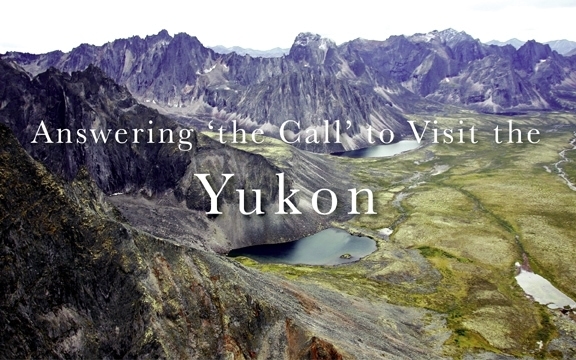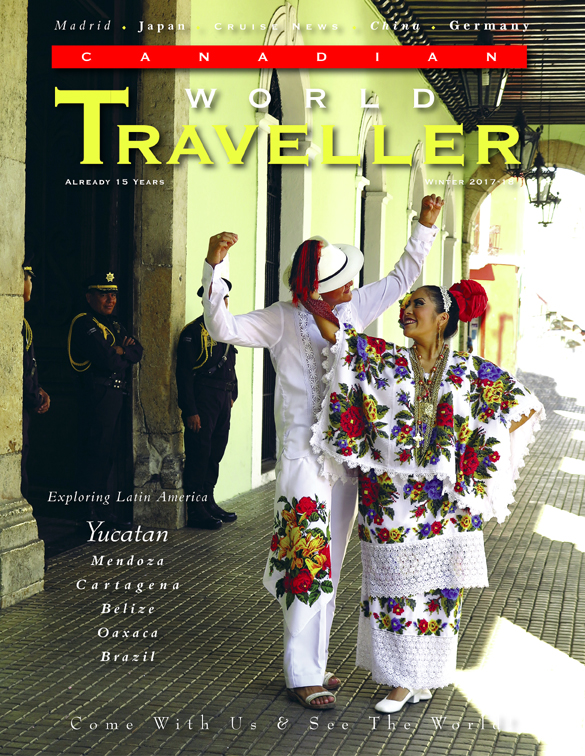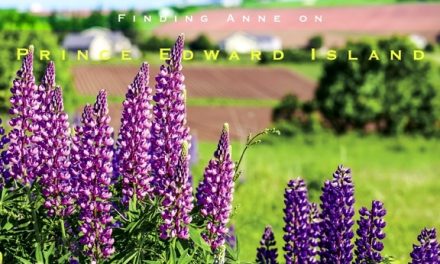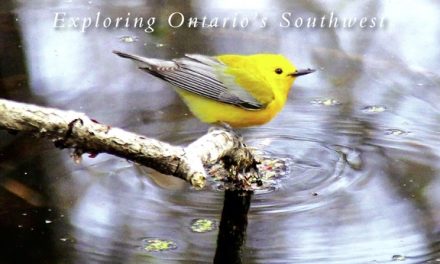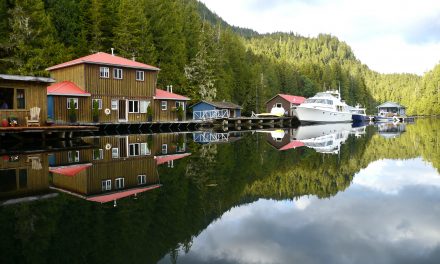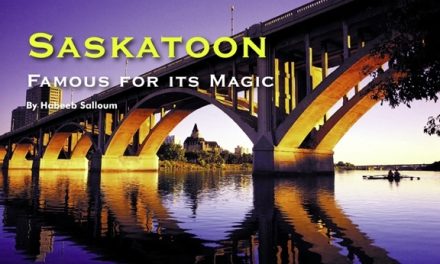Canada
Answering ‘the Call’ to Visit the Yukon
Article and photography by Steve Gillick

Not a lot of people were walking the streets of Dawson City at 6:30 am. In fact, many had just gone to sleep. This was the Discovery Days weekend, celebrating the discovery of gold on Rabbit Creek on August 16, 1896. The anticipation of finding more gold in the area and the wild dreams of sudden wealth resulted in the Creek being renamed “Bonanza Creek” only five days later. And while some referred to the enthusiastic, obsessive rush to the north to strike it rich as “Klondicitis”, the word itself can still be applied to 21st Century visitors relishing escapism, craving fresh air, cherishing incredibly inspiring scenery, and treasuring connections with nature. This is what the Yukon is all about.
On the previous day we had flown from Whitehorse to join a city-full of visitors who had made the pilgrimage to Dawson City. Some came by cruise ship from Seattle or Vancouver to Skagway, then on the Dawson Highway to Whitehorse and finally on the Yukon Highway to Dawson. Some arrived by RV from Alaska; some flew in from Old Crow and Inuvik farther north, and a few even arrived by canoe on the Yukon River.
As we approached the city from the airport someone asked if our accommodation at the Downtown Hotel was centrally located, and the response was that everything in Dawson, a town of roughly 1400 people, was centrally located! Our second surprise when we checked in, was that the famous Sour Toe Cocktail Bar is part of the Downtown Hotel. And so after a great Greek Dinner at the Drunken Goat (a three minute walk away), we confidently prepared ourselves to take part in a sacred Dawson City tradition. It began in 1973 when Captain Dick Stevenson found a jar in a distant cabin, containing the toe of Louie Linken, that had been amputated in the 1920’s. Stevenson thought up the idea of the Sour Toe Cocktail Club.
Membership for our group was an easy 7-Step process.
1. Buy a drink at the bar, usually Yukon Jack Whiskey.
2. Line up at the table where the signage warns people not to swallow the toe or risk a $2500.00 fine.
3. Hail the arrival of Sue, the Sour Toe Queen, who appeared in the bar at precisely 9:00 pm.
4. Pay $5.00 and watch Sue unpack the real, blackened, dried up, human toe, from its box.
5. Wait until Sue plunks the toe into your glass
6. Drink the whiskey, deferring to the proper etiquette that the toe must touch your lips (but not pass beyond your lips). To help, you can think of the poem “you can drink it fast, you can drink it slow, but your lips must touch that gnarly toe”.
7. Receive a Certificate proving your membership in the Sour Toe Club (I am member No. 75,115).
Energized by my celebrity status, we headed to Diamond Tooth Gerties to catch the 10:00 pm show. The song and dance hall is named after Gertie Lovejoy who in 1898 during Dawson City’s heyday, had a diamond embedded between her two front teeth. The show was a lot of fun, the drinks flowed, the casino was very active, but by 11:30 it was time to get some sleep.
This lasted all of two hours when Jim, our host from the Yukon Government telephoned my room with three words. “Steve?…Northern Lights!”. And then hung up. Less than 4 minutes later, our small group met outside with temperatures hitting Minus 1C (30F), to scan the skies for the mystical, shifting motions of the Aurora Borealis – and we saw it!
After a few more hours of sleep, I was walking the deserted city streets at 6:30 am and watching the heavy morning mist hug the mountains. As I passed the Third Avenue Complex, three dilapidated wooden buildings that lean into and support each other because of the freezing, thawing, buckling and heaving of the permafrost, a man passed by me and proclaimed “It’s so early you can smell the trees”.
It was a sentiment that I heard echoed by many of the locals I encountered in the Yukon. Bob Skinner, the helicopter pilot with Trans North who flew us to the Tombstone Mountains, talked about “the complete awe factor of visiting these special places—ragged, smooth, breathtaking” and he went on to talk about “the harsh rough, beautiful, good and healthy” life that living in the Yukon imparts to its people. “Everyone needs to centre themselves”, he said, and the Yukon vistas—mountains, trees, rivers and valleys were all important factors in the process.
Brad Whitelaw, the owner of the Klondike Spirit paddle-wheeler that takes tourists up to Moosehide Village, past the Paddewheel graveyard, along Dawson City’s waterfront and over to the where the waters of the Klondike River flow into the Yukon River, spoke about “humbling experiences with nature”. He talked about the floral fragrance in the Spring when Wildflowers are in bloom and described it as “a bouquet in the face”. He spoke of the “panoramic sense of beauty” that so many vistas in the Yukon offer and he talked about the reaction of visitors to the area when they experienced “a sense of enlightenment, a sense that they are alive”.
My own humbling experiences began a few days prior in Whitehorse where, on my first morning stroll, I encountered a juvenile Bald Eagle sitting by the rushing waters of the Yukon River. For ten minutes the eagle and I were alone and only a few feet apart.
On the morning before the flight to Dawson City, during our short canoe trip from Whitehorse to the Takhini River, the mirror-surface of the water perfectly reflected the deep blue, ‘big’ sky, the amazing, billowy Yukon clouds and the grandeur of the mountains with their verdant cover of poplar, spruce and birch trees. But to add to the opulence of the scene, a good part of the River is home to Golden Eagles and Bald Eagles who perch, preen, fish, and glide through the skies. For me it was an emotional as well as a photographic high!
And these feelings of respect for nature are ingrained in the traditions of the land. The Dänojà Zho (“long time ago”) cultural centre in Dawson City educates visitors about the history, culture and traditions of the Tr’ondëk Hwech’in, “the water people” who have lived on the land for thousands of years. A walk through the center underscores the Yukon theme of ‘respect and reverence for the river and the land”. As a matter of note, the word “Klondike” is derived from a mispronunciation of the name of these First Nations people.
We joined in the celebration of Discovery Days, starting with a humorous walking tour of the city, with “William Ogilvie”, the Commissioner of the Yukon in 1897 as one of our guides. He spoke about bars, banks, brothels, buildings, floods, personalities and of course, the gold that lured them all to the area during the period when Dawson City had so many residents that it was referred to as the ‘San Francisco of the North’.
The Discovery Days parade passed along with waterfront with red-uniformed RCMP officers, bagpipers, horses pulling an antique fire engine, balloons, monster trucks and lots of smiles and fun.
We watched the Mud Bog, where souped-up trucks race through a thick mud pit. We drove to Bonanza Creek to see where the gold ‘rush” began. We panned for gold at Claim #33 (I found $4.00 worth!) and then visited the site of Dredge #4 to see the huge ‘automatic’ machine that used a bucket line to dig up the river bed—like a huge gold panning operation. And we dropped by Claim #6, where, next to signs warning that we were in bear country, visitors are allowed to pan for gold, with many showing the same determination as 40,000 “stampeders” did 120 years before.
In Pierre Berton’s book Klondike, he spoke of the ‘restless wanderers’ who came north in the late 1890’s not so much to seek their fortune but to follow the frontier and stay away from the trappings of city living. Today, there are many travellers who look for that same kind of ‘escape’. Whether it’s turning off the cell phone or not checking emails for an hour or a day; whether it’s watching the Northern Lights or looking around the next bend in the river or whether its spotting a bald eagle on a bare tree, silhouetted against a deep, blue sky, many travelers are looking for that special destination that brings them relaxation and a connection with nature. All they need do is head to the Yukon on their next holiday.
In Jack London’s novel The Call of the Wild, he writes about the moment when Buck, the domesticated dog decides to completely embrace his natural, wild instincts. “It was the call… sounding more luring and compelling than ever before. And as never before, he was ready to obey”.
www.travelyukon.com
Click on cover to view published article

